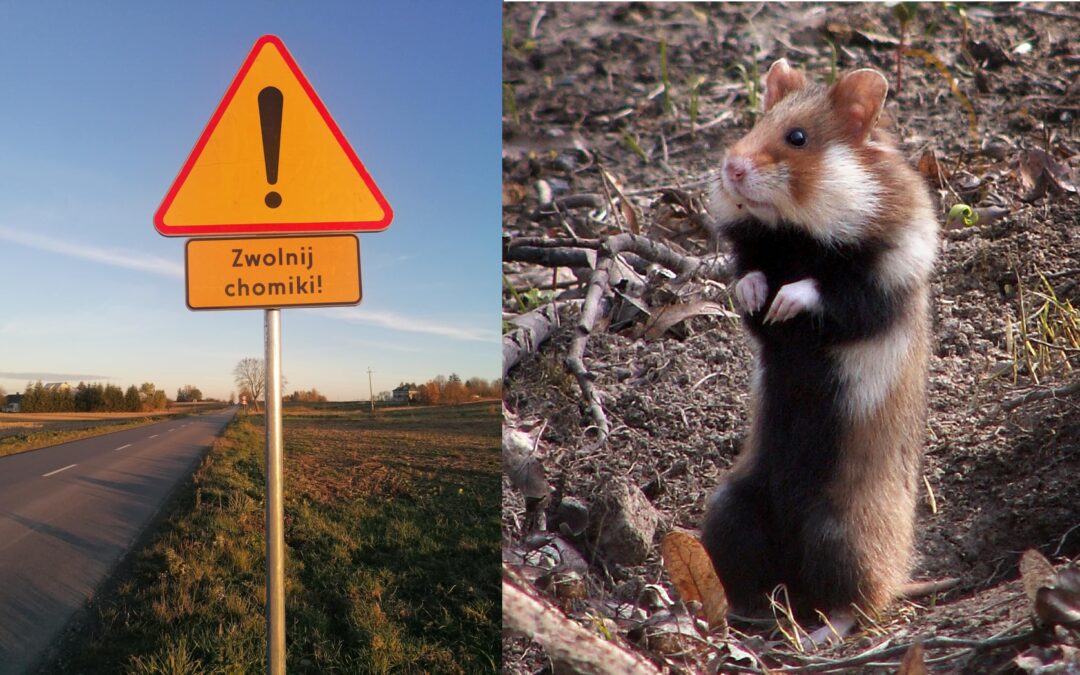Keep our content free from ads and paywalls by making a donation to support our work!

Notes from Poland is run by a small editorial team and is published by an independent, non-profit foundation that is funded through donations from our readers. We cannot do what we do without your support.
Signs have been installed in a rural part of eastern Poland warning drivers to be careful of hamsters on the road following a number of recent deaths of the animals, which are native to the area but classified as critically endangered.
“Slow down [for] hamsters!” read the signs, an image of which was shared on social media by a public parks authority in the Lublin province.
They also posted pictures of European hamsters – a separate species from the kind of hamsters kept as pets – that have been killed on local roads.
European hamsters, which occupy areas ranging from Central Europe through to Central Asia, are classified as a critically endangered species. They are protected by law in Poland – where their range has decreased by 75% since the 1980s – and other parts of the EU, reports Polskie Radio.
A recent inventory “showed that these colourful rodents have settled in this area in quite large numbers”, wrote the Lublin provincial parks authority. “But this does not change the fact that their population is still threatened with extinction. Unfortunately, hamsters very often die on the roads.”
They noted that the signs have been installed around the town of Zamość in cooperation with the local road agency and a wildlife foundation. “We hope that our cooperation will be an example for taking action to protect this endangered species,” they added.
Speaking this week to Polskie Radio, Paweł Łapiński, director of the provincial parks authority, noted that one of the greatest threats to the European hamster are the roads that cross the fields where they live.
His colleague, Małgorzata Bielecka, said that they “come across quite a large number of dead hamsters” on a major road between Zamość and the nearby village of Wielącza. If the signs that have been erected have a positive impact, more may be installed, she added.
Bielecka noted that their inventory, carried out in May and July this year, revealed a total of 58 European hamster burrows in the area. She explained that “hamsters are loners, with one burrow inhabited by one animal”.
As well as being threatened by human activity – especially agriculture and urbanisation – European hamsters are also impacted by climate change, with warmer and more unstable winters disturbing their hibernation patterns, reports broadcaster Polsat.
A team of volunteers, including local police, are helping toads cross the road in the city of Poznań.
As the amphibians emerge from their winter sleep and head to ponds for mating season, a fifth end up as roadkill and their population has been declining https://t.co/qaVmdnTuGf
— Notes from Poland 🇵🇱 (@notesfrompoland) March 31, 2021

Notes from Poland is run by a small editorial team and published by an independent, non-profit foundation that is funded through donations from our readers. We cannot do what we do without your support.
Main image credit: Zespół Lubelskich Parków Krajobrazowych/Facebook and katanski/Wikimedia Commons (under CC BY 3.0)

Daniel Tilles is editor-in-chief of Notes from Poland. He has written on Polish affairs for a wide range of publications, including Foreign Policy, POLITICO Europe, EUobserver and Dziennik Gazeta Prawna.



















